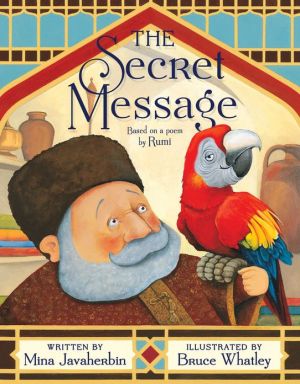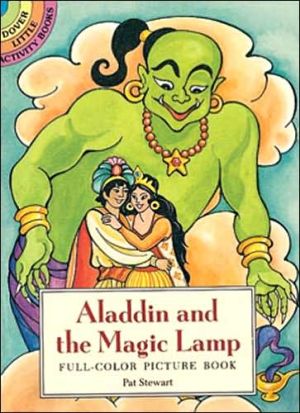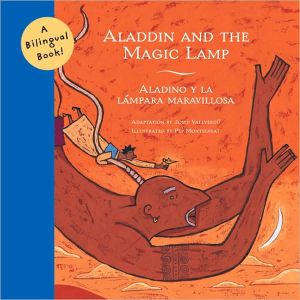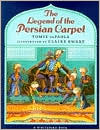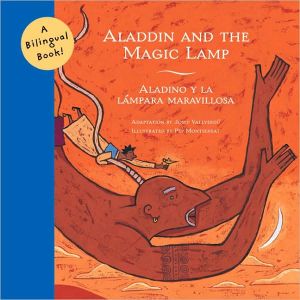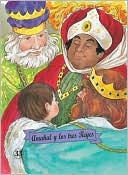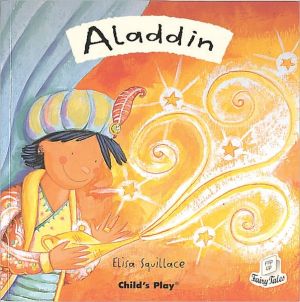The Secret Message
Alone, imprisoned in a golden cage, and far from the jungles of home, a parrot longs to escape. Will he ever fly free again?\ Based on a poem by the ancient Persian philosopher Rumi, The Secret Message is a funny story of surprising twists, powerful solidarity, exotic travels, and a simple wish fulfilled. This witty tale, told with humor and vibrant images, will enchant young readers as it introduces them to the culture, literature, and history of Persia.
Search in google:
All day the bird sang of longing. But the merchant would not let him go…Alone, imprisoned in a golden cage, and far from the jungles of home, a parrot longs for freedom. Will he ever escape?Thanks to a secret mesage passed along by his friends in India, the parrot outwits his wealthy owner and soars to freedom. Based on an ancient Persian poem, The Secret Message is a story of surprising cleverness, powerful solidarity, exotic travels, and a simple wish fulfilled.This enchanting tale, told with subtle humor and vibrant images, is a perfect introduction to the culture, literature, and history of the Middle East.Publishers WeeklyWhatley's (Diary of a Wombat) lighthearted touch animates this 13th-century Persian fable, based on a poem by Rumi. The pompous Persian merchant who stars has a bulbous nose, a quizzical expression, and the physique of one of Snow White's dwarfs. His caged parrot has helped him attract customers, and the merchant has prospered over the years. The parrot asks the India-bound merchant to carry news of his captivity to his free relatives as he passes through the forest. The merchant is shocked by the parrots' response: "Suddenly, one by one, they fell off the branches with their backs on the ground and their feet in the air. Their bodies lay still under the shadow of the banyan canopy." When he delivers this news back at home, his parrot collapses, too, and the anguished merchant removes him from his cage--whereupon the parrot flies away, "...thanks to the message from my friends in India!" Javaherbin (Goal!) tells the story simply, and Whatley's insouciance takes some of the shock out of the parrots' "deaths." After the first suspenseful reading, children should clamor for repeats. Ages 4 7. (Oct.)
\ Publishers WeeklyWhatley's (Diary of a Wombat) lighthearted touch animates this 13th-century Persian fable, based on a poem by Rumi. The pompous Persian merchant who stars has a bulbous nose, a quizzical expression, and the physique of one of Snow White's dwarfs. His caged parrot has helped him attract customers, and the merchant has prospered over the years. The parrot asks the India-bound merchant to carry news of his captivity to his free relatives as he passes through the forest. The merchant is shocked by the parrots' response: "Suddenly, one by one, they fell off the branches with their backs on the ground and their feet in the air. Their bodies lay still under the shadow of the banyan canopy." When he delivers this news back at home, his parrot collapses, too, and the anguished merchant removes him from his cage--whereupon the parrot flies away, "...thanks to the message from my friends in India!" Javaherbin (Goal!) tells the story simply, and Whatley's insouciance takes some of the shock out of the parrots' "deaths." After the first suspenseful reading, children should clamor for repeats. Ages 4–7. (Oct.)\ \ \ \ \ Children's Literature\ - Peg Glisson\ A Persian merchant uses a beautiful parrot to attract customers to his shop. The parrot, from the jungles of India, is now imprisoned in a small cage. He daily sings songs of longing for the freedom and the beauty of home, but the merchant would not let him go because of his ability to sing and talk. The merchant's wealth and fame is at least partially due to the beautiful parrot and he generously rewards the parrot with a large, golden cage. Before returning to India to buy more goods for his shop, his family and servants each make requests; and so, before leaving, the merchant asks the parrot what he wants from the place that had been home. The parrot did not want any gifts, only for the merchant to tell the other parrots, flying free, that he misses them and their beautiful surroundings. The parrot's strange request actually leads to his freedom, as his family and friends manage to send him a message that helps him fly free at last. Javaherbin's retelling of Rumi's ancient Persian poem flows smoothly; its message about freedom is timeless. In an author's note, Javaherbin recalls her father's telling her this tale and discovering, as an adult, that it is actually a thirteenth-century poem. She wisely keeps her retelling simple. Whatley's vibrant acrylic illustrations bring to life the beauty of Persia and the forests of India. The images are filled with details, including wonderfully expressive faces. This tale leaves readers with much to ponder and will sustain many rereadings. Reviewer: Peg Glisson\ \ \ School Library JournalK-Gr 3—Javaherbin retells a story taken from an ancient Persian poem, "Parrot and the Merchant," by Jalaledin Rumi. It is the tale of a wealthy merchant who keeps a parrot in his shop whose colorful feathers, singing, and talking attract many customers. When the merchant travels to India on a shopping trip, he promises to bring something home for each family member, including the parrot, whose unusual request leads to his own freedom. Colorful cartoon-style acrylic artwork shows people in traditional dress and brightly colored birds and reinforces the capably written storytelling. Whatley includes touches of humor in several of the illustrations. While this is not an essential purchase, it offers an interesting twist that could lead to a discussion of the meaning of freedom.—Susan Scheps, Shaker Heights Public Library, OH\ \ \ \ \ Kirkus ReviewsBased on a poem by the 13th-century Persian poet Rumi that Iranian-born Javaherbin heard from her father as a bedtime story, this adaptation offers an environmental message that will resonate with today's readers. The colorful parrot featured in Whatley's attractive, stylized illustrations has brought attention and thus good fortune to his owner, a Persian merchant. Not surprisingly, the fact that his cage is spacious and made of gold does little to assuage the parrot's sadness over being confined. When the merchant travels to India, the parrot devises a clever plan to find a way to win his freedom. The text is lengthy but straightforward and well-paced, and the acrylic paintings include amusing details and appealing textures, providing plenty to pore over. While this may never reach a wide audience, it's a great choice for adults interested in discussing philosophical issues and/or exploring diverse cultures with young listeners. Unusual and thought-provoking. (Picture book. 6-10)\ \ \
